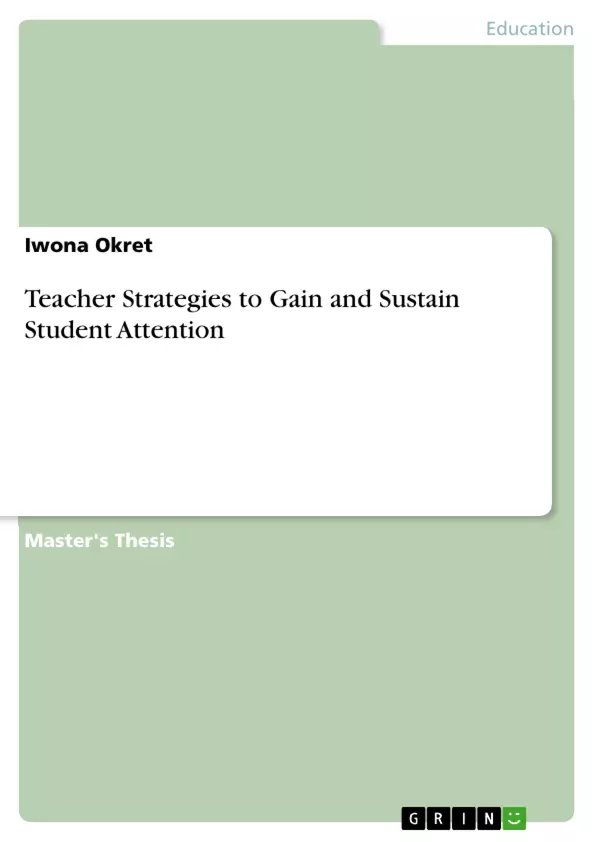The strategies to gain and sustain student attention have been studied by many experts, convinced that without the involvement of the students the teaching cannon be effective.
The objective of this small-scale research is to explore the task implemented in a language school for adults in order to understand what strategies adopted by the teacher contribute to students’ involvement.
The analysis of the data obtained from the video recording, complemented by the feedback from the students and other teachers shows that the observed teacher uses successfully many different strategies to gain and maintain students’ attention, such as setting a positive mental set, employing clarity, encouragingness and using attention-getters.
Key words: gain student attention, sustain student involvement, positive mental set, encouragingness, group focus, activity flow, effective monitoring
Table of Contents
- Introduction
- Context
- Theoretical Framework
- Strategies to gain students' attention at the beginning of the lesson.
- Strategies to maintain students' attention.
- Focus of the observation.
- Methodology.
- Analysis and discussion.
- Conclusions.
- References.
- Annexes
- Transcript 1.
- Transcript 2.
Objectives and Key Themes
This research aims to explore teaching strategies implemented in an adult language school to understand how they contribute to student engagement. The analysis focuses on a specific teacher's approach to gain and maintain students' attention.
- Strategies to gain and sustain student attention
- Teacher strategies for student involvement
- Effective teaching methods in adult language learning
- Analysis of classroom observation data
- Importance of student engagement in effective teaching
Chapter Summaries
The introduction presents the research objective and context, exploring the significance of student attention in language teaching. Chapter two delves into the theoretical framework, discussing various strategies for gaining and maintaining student attention. The focus of the observation is elaborated in Chapter four, while the methodology employed in the research is detailed in Chapter five. Chapter six presents the analysis and discussion of the data collected, revealing key insights from the observed lessons. This preview concludes before reaching the conclusions chapter, aiming to avoid any potential spoilers.
Keywords
This research focuses on the keywords: student attention, teaching strategies, language learning, adult education, classroom observation, effective monitoring, positive mental set, encouragingness, group focus, activity flow.
- Citar trabajo
- Iwona Okret (Autor), 2011, Teacher Strategies to Gain and Sustain Student Attention, Múnich, GRIN Verlag, https://www.grin.com/document/294469



